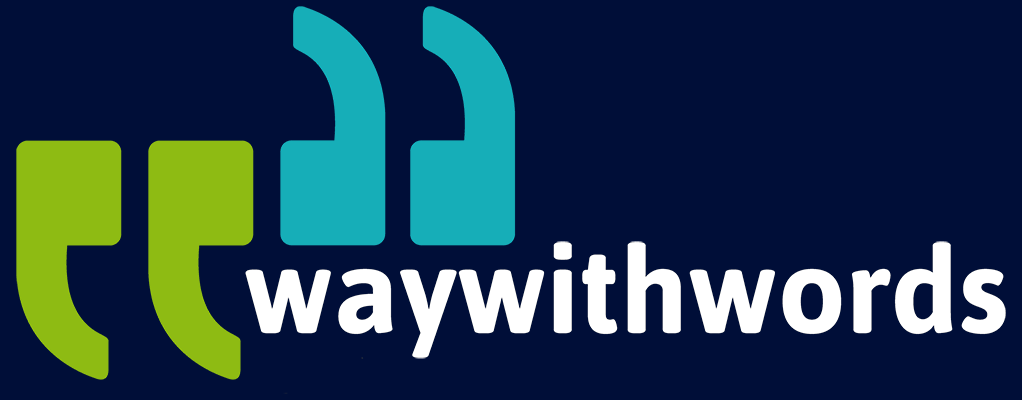Enhancing Accessibility with Speech Data: Empowering Individuals with Disabilities
How Can I Use Speech Data to Improve Accessibility for People with Disabilities?
Accessibility is not just a feature—it’s a fundamental human right. With the growth of AI technologies, speech data is becoming a vital tool in creating inclusive systems that bridge communication gaps for people with disabilities. By developing solutions that leverage speech data – even challenging speech data collected in noisy environment, we’re seeing transformative improvements in how individuals interact with the world around them—making everyday life more independent, dignified, and connected.
This article explores the strategic use of speech data for accessibility—highlighting the innovations, case studies, ethical practices, and forward-thinking developments that are reshaping assistive technologies.
The Role of Speech Data in Accessibility Solutions
Speech data refers to recorded, annotated, and structured samples of human speech used to train and refine voice-based technologies. When applied in the context of accessibility, it becomes a transformative tool—enabling voice interfaces, speech recognition, and audio feedback systems that support individuals with disabilities.
People living with disabilities often face barriers to using traditional input or communication tools. Speech data allows developers to create alternative interfaces that rely on vocal interaction, bypassing the need for touch, sight, or fine motor control. For example, users with mobility impairments can control devices using voice commands, while those with visual impairments can receive spoken feedback through screen readers and virtual assistants.
Crucially, accessibility-driven applications must be trained on diverse and inclusive datasets. Speech data should reflect a wide spectrum of speech variations, including regional accents, non-standard pronunciation, stammered or slurred speech, and tone differences that may result from conditions like cerebral palsy or Down syndrome. Without this inclusivity, speech technologies risk excluding those who need them most.
Accessible solutions like real-time captioning, voice search, and assistive readers rely on highly accurate speech recognition. This accuracy can only be achieved with robust speech data systems that are continuously updated and tested against diverse user profiles. Data providers like Way With Words support this process by curating specialised datasets that support adaptive, inclusive technology.
Ultimately, speech data acts as a bridge between people with disabilities and digital systems. It empowers autonomy, allowing users to navigate, communicate, and interact independently—whether they’re ordering groceries, accessing education, or managing smart home systems.
Technologies and Innovations Supporting Disabilities
Innovations driven by speech data are rapidly reshaping the accessibility landscape. From mainstream tech products to bespoke assistive devices, speech-powered interfaces are giving individuals with disabilities greater freedom, efficiency, and control over their environment.
Speech-to-Text Tools: One of the most common applications is live transcription—software that converts spoken language into written text in real time. These tools are essential for people who are deaf or hard of hearing, allowing them to follow conversations, lectures, or meetings. Apps like Google Live Transcribe and Otter.ai exemplify this in action.
Text-to-Speech Systems: For individuals with visual impairments or reading disabilities (e.g., dyslexia), speech data powers natural language voice synthesis. This converts digital text into spoken output—supporting navigation, information access, and independent learning. Voice assistants like Apple’s VoiceOver or Amazon’s Alexa use these features to help users access a broad range of tasks hands-free.
Voice Control Interfaces: Individuals with limited mobility benefit from technologies that replace physical input (keyboard, mouse, touch) with speech. Voice commands can control smartphones, computers, smart TVs, and home automation systems. Innovations like Apple’s Voice Control and Windows Speech Recognition provide hands-free computing tailored for accessibility.
Customisable Speech Recognition: Startups like Voiceitt are developing speech recognition software specifically trained to understand atypical speech patterns. These personalised tools can recognise users with speech impairments—turning unintelligible speech into clear, synthesised phrases for communication.
Speech-Enabled Wheelchairs & Wearables: Emerging tools now use voice activation to control wheelchairs or assistive robots. Smart glasses, wearable microphones, and voice-controlled environments enable people with physical impairments to interact with their surroundings more naturally and safely.
These innovations are fuelled by high-quality, annotated, multilingual speech data. With more inclusive training data, developers can extend these tools to a broader range of users, creating genuinely universal design experiences.

Case Studies: Accessibility in Action
Understanding how speech data translates into meaningful impact requires looking at practical implementations. Several pioneering technologies and organisations are already demonstrating the benefits of using speech data to enhance accessibility.
Voiceitt – Speech Recognition for Non-Standard Speech: Voiceitt, an award-winning accessibility tech startup, focuses on enabling communication for individuals with speech impairments caused by conditions like cerebral palsy or stroke. Using proprietary datasets of non-standard speech, the company built a mobile app that recognises the user’s unique speech patterns and translates them into standard text or speech output. This dramatically increases communication possibilities for users who were previously difficult to understand—even by close family.
Google’s Project Euphonia: Google’s research initiative aims to improve automatic speech recognition (ASR) for people with atypical speech. By collecting and analysing a wide range of impaired speech samples, the project enhances voice assistants and transcription tools to better serve people with ALS, multiple sclerosis, and other conditions. The inclusive speech datasets collected by Euphonia are also shared with the wider AI research community to advance accessibility standards.
Microsoft Seeing AI: Seeing AI is a mobile app that helps visually impaired users interpret the world around them. While its primary strength lies in computer vision, its interface is powered by natural language processing and real-time speech narration. Users receive spoken descriptions of people, objects, documents, and even currency. This interaction depends on speech synthesis that has been refined through massive speech datasets, ensuring clarity, pacing, and natural delivery.
Audiobooks and Accessible Education Platforms: Platforms like Bookshare or Learning Ally provide human-narrated audiobooks for learners with print disabilities. These services depend on structured and indexed speech data to allow easy navigation by chapter, section, or page—something that’s impossible with generic audio files. Increasingly, machine learning is being used to supplement human narrators, expanding access to educational resources.
Way With Words – Speech Collection for Inclusive Design: Way With Words supports accessibility-focused initiatives by curating speech datasets that reflect global linguistic and phonetic diversity. These datasets are essential for building ASR and TTS systems that work reliably across a variety of disabilities, regions, and use cases.
These real-world examples prove that inclusive data collection leads to meaningful, life-enhancing outcomes for people with disabilities.
Ethical Considerations in Accessibility Design
With great technological power comes great responsibility—especially when working with vulnerable or marginalised communities. Using speech data to enhance accessibility requires strict attention to ethical considerations, particularly around consent, representation, and bias.
Consent and Data Privacy: Recording and using speech data involves sensitive personal information, especially when it includes identifiable voices or health-related contexts. It is vital to obtain explicit, informed consent from participants—clearly explaining what the data will be used for, how long it will be stored, and whether it will be shared. People with disabilities may require additional support to fully understand the implications of consent forms, which should always be made accessible in multiple formats (e.g., easy-read, braille, audio).
Representation and Inclusivity: Most commercial ASR systems perform poorly when exposed to non-standard speech patterns. This is because their training datasets are often skewed towards young, healthy, native speakers of a dominant language. To create equitable systems, developers must gather speech data that includes users with various disabilities, different speech disorders, and diverse linguistic backgrounds. Failing to do so reinforces digital exclusion.
Bias Mitigation: Bias in AI speech systems can lead to practical exclusion and even harm. For example, a healthcare app that doesn’t understand a user’s speech due to poor training could misinterpret instructions or provide incorrect feedback. Developers must test systems for fairness across demographic groups, identify performance gaps, and retrain models using enriched datasets.
Transparency in AI Decisions: When speech-based systems are used in high-stakes scenarios—such as education, healthcare, or legal contexts—users have the right to understand how decisions are made. If a voice assistant misinterprets a command or gives incorrect information, there must be mechanisms for review and human oversight.
Ethical Data Providers: Partnering with responsible data providers is essential. Way With Words, for example, adheres to strict GDPR compliance, offers human-verified transcription and dataset curation, and works directly with clients to ensure speech data is ethically sourced and appropriately annotated.
Ethical design isn’t a legal checkbox—it’s a cornerstone of creating trust and long-term impact in accessibility technology.

Future Trends in Accessible AI Solutions
As AI and speech technologies evolve, the future of accessibility holds exciting promise. Trends indicate a move from reactive, one-size-fits-all tools to intelligent, responsive systems that adapt to individual user needs and real-world complexity.
Hyper-Personalised Speech Interfaces: Future accessibility tools will recognise and adapt to a person’s specific speech pattern, pace, and linguistic nuances over time. For example, an ASR system may start by learning general speech but refine itself through continuous interaction with the user. This is especially useful for degenerative conditions where speech changes over time.
Multimodal Accessibility: Combining speech data with other inputs like gesture, facial recognition, and eye tracking will produce richer, more intuitive interfaces. A person with limited verbal ability might use speech for basic commands and facial expressions for nuance—together enabling fuller expression.
Language and Dialect Inclusion: Efforts are underway to collect speech data from underrepresented languages, dialects, and accents—including indigenous and regional varieties. This inclusion not only benefits native speakers but also supports second-language learners and migrants with disabilities, ensuring no one is left behind.
Wearable AI Companions: Next-generation accessibility may come in the form of discreet, wearable assistants. These devices will interpret speech, provide contextual prompts, and offer reminders or warnings in real time—whether navigating busy streets or managing medications.
Speech Data Governance: As AI becomes deeply embedded in assistive tools, regulatory frameworks will evolve to ensure responsible use of speech data. This may include mandatory transparency reports, independent audits of training datasets, and enforcement of accessibility standards in commercial AI.
Industry Collaborations: Tech firms are increasingly partnering with NGOs, research institutions, and speech data providers like Way With Words to co-develop solutions that are both technically robust and socially responsible. These partnerships will continue to drive inclusive innovation.
In essence, the future of accessible AI lies in combining ethical speech data collection with personalised, user-centred design. As technology grows more intelligent, so too must our commitment to ensuring it uplifts every voice—equally and inclusively.
Final Thoughts on Improving Accessibility with Speech Data
Improving accessibility with speech data is more than a technical endeavour—it’s a commitment to equity, autonomy, and human dignity. As developers, accessibility professionals, and policy makers collaborate, the integration of inclusive speech data becomes essential to digital innovation.
Way With Words is at the forefront of this movement, offering specialised speech collection services that ensure AI systems reflect and respect all voices. By prioritising accessibility from the ground up, we take another step toward a more inclusive world.
Resources and Further Reading
Wikipedia – Accessibility : This article offers a comprehensive overview of accessibility principles, covering legal, design, and technological frameworks essential to creating inclusive environments.
